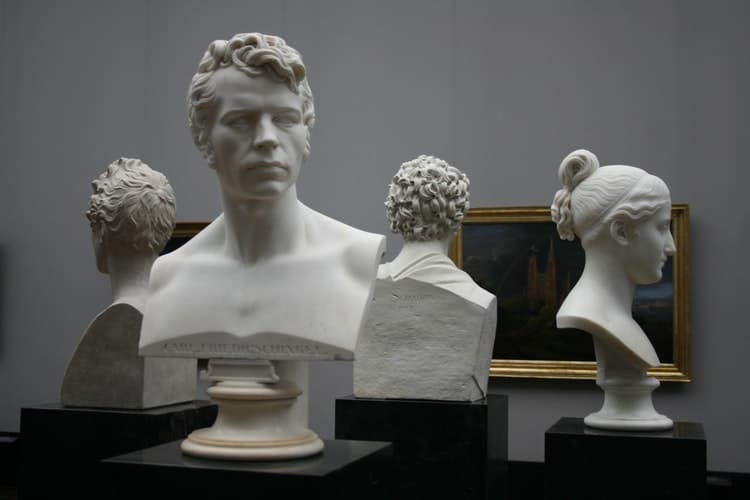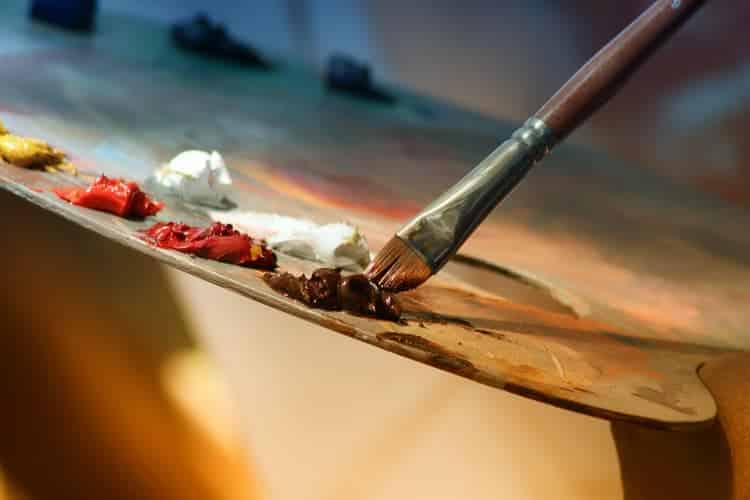Human ingenuity, talent, and imagination are expressed in all art forms. Many art forms may be appreciated aesthetically, audibly, or physically via the senses. Traditionally, art was valued for its beauty or emotional force, but it is increasingly utilized as a vehicle for political and social criticism.
The types of art we’ll examine in this article encompass most works of art. We can better appreciate art and learn about its significance in our culture and history if we distinguish between the many types of art.

Forms of Art
Even though there has been a long-running debate on what constitutes art, it is generally agreed upon that there are seven basic categories: literature, music, painting, sculpture, and drawing. Painting, sculpture, architecture, literature, music, film, and theater are all forms of art.
- Painting
Among the earliest forms of art, painting may be traced back to tens of thousands of years ago and is found in caves in numerous locations across the world, including the Drakensberg, the Northern Territory, and the Lascaux paintings in France. Some of these locations have been declared as UNESCO World Heritage Sites in order to protect and conserve the cultural heritage connected with them.
On a two-dimensional surface such as paper or canvas, painting is the application of paint.
The pigment in the paint is blended with a binder like oil, egg, or water, as well as a filler if desired to increase the overall quantity. Natural colors, such as those made from plant debris, animal bones, and soft stones and pebbles, were used in ancient times, but today most people utilize synthetic colorings. Various other compounds have been included in the paint’s formula in more recent years, making it easier to apply.

- Sculpture
The sculpture is an old type of visual art that has been practiced since the dawn of humanity. Traditional materials used in sculpture are clay, stone, porcelain, metal, or wood, which are used to produce three-dimensional visual impressions.
Classical artists like Michelangelo and Myron used marble and metal to carve and cast their masterpieces. A large number of the most famous works of art in the globe, such as the Statue of Liberty, David, and the Manneken Pis, are made from these materials.
In contrast, today’s sculptors have access to a wide range of materials, from metals and plastics to glass and found objects. Artists working in the modern era have access to a greater range of tools and methods than their predecessors.
- Architecture
It is common for people to think of architecture as going back to the earliest structures that humanity constructed as houses. The teepee in the United States or the yurt in Mongolia comes to mind when we use this definition of architecture. The link between function and beauty is often fundamental to architectural design as it is in other types of art.
- Cinema
In terms of art forms, cinema is the most recent one. In comparison to the other arts on our list, the film has only been for a little over a century, yet it has already established itself as one of the most popular.
Movies are a multisensory art form in which a three-dimensional environment is projected onto a two-dimensional screen. Unlike literature, movies communicate a story through a combination of spoken word, visual art, and other elements.
The film business grew swiftly and is now the vast enterprise we know it. Every film results from a wide variety of artistic vision and expertise. The movie business employs special effects, animation, makeup, costumes, scripting, scene design, scoring, acting, directing, and more. According to this article, many artists fit within the other seven main areas of art.
- Music
Harmony, timbre, melody, and rhythm are components of a musical composition. When sounds, or vibrations, are placed together to make an audible composition, the result is music. Even though the existence of music in ancient civilization is more difficult to trace than that of visual art, thousands-year-old traces of musical instruments have been uncovered.
As a universal element of humans, the human voice and/or instruments have played an essential part in many civilizations throughout every continent.
Musicians may now pick from a wide range of ready-made string, percussion and wind instruments, all of which can be grouped into three categories: string, wind and acoustic.
Conclusion
Throughout this article, we’ve looked at the diverse genres of art that have penetrated our concepts of temporality to reflect an enduring creative spirit that is the heartbeat of human existence.
It should be noted that contemporary art has taken on new faces and forms, with new artistic horizons conquered inside the realms of manner, digital art, and graphic arts and videography as examples of recent trends in art that don’t conform to the types of art described in this article but should be taken into account. If you want to learn more about art, articite.com is the right place for the art lovers.

